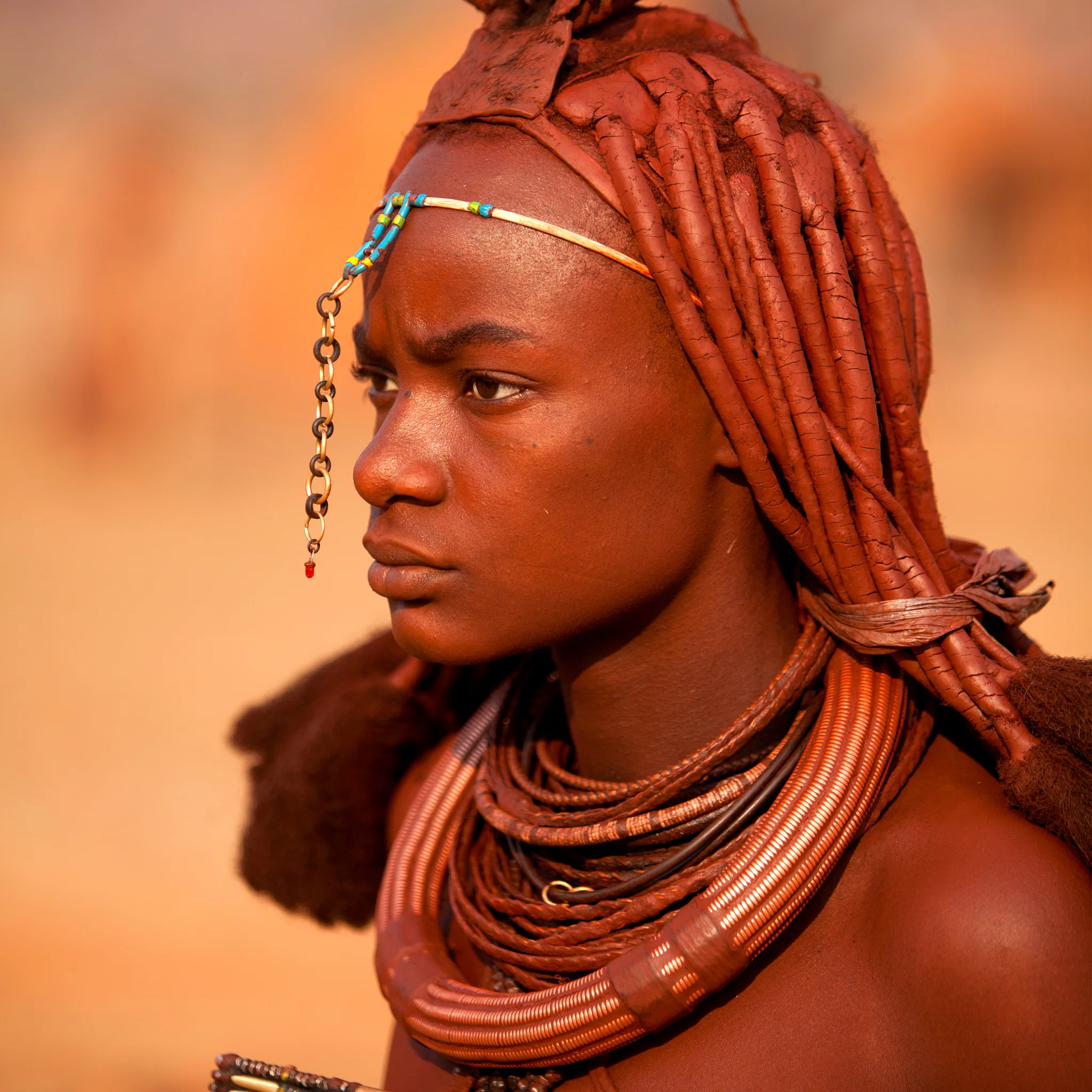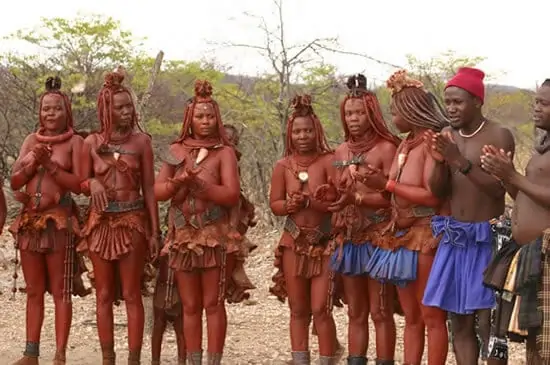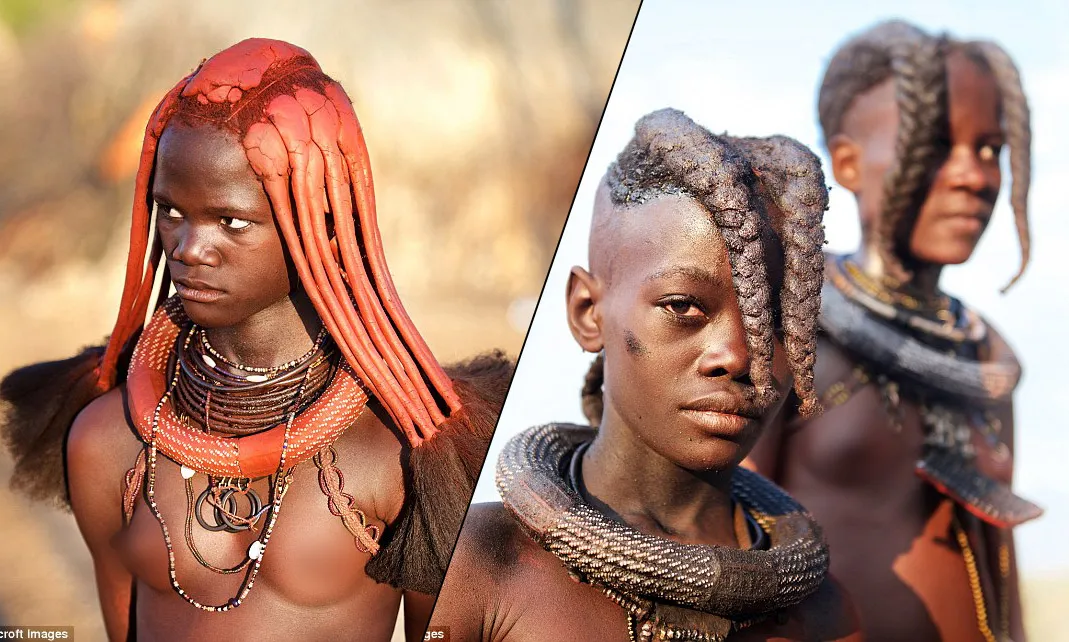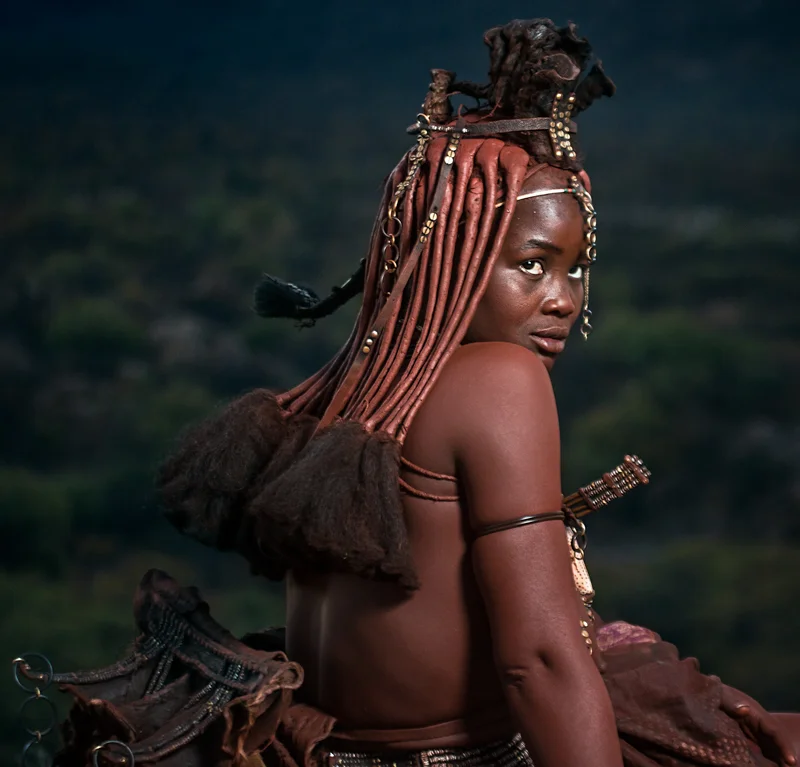The Age-Old Beauty Rituals of the Himba Tribe.
- Cory Phillips
- May 24, 2024
- 5 min read
Updated: Jun 4, 2024
Hello Everyone I'm really excited about today's subject I'm going to dive into the skincare practices of the Himba people of Northern Namibia in the Kunene Region (formerly Kaokoland) and on the other side of the Kunene River in southern Angola. The purpose is to examine skincare routine for these nomadic people of the desert who have an almost legendary skin Beauty despite living in dry harsh conditions with little water. Their skincare practices should key you in to how simple skincare can actually be. As you take a look at the pictures above, notice that their skin is very healthy and glowing and this is true no matter how many pictures you look at online. Even the older people have very little wrinkles and imperfections other than the normal loss of collagen and elasticity that inevitably occurs with old age. Again, this is despite living in conditions that is very harsh on skin and hair.
(Note: The Himba are considered the last (semi-) nomadic people of Namibia.)
The significance of red ochre in Himba beauty rituals
The Himba people have a rich tradition of using red ochre in their beauty rituals. Red ochre is a natural pigment that is obtained from the earth and holds great significance in their culture. It is believed to symbolize the earth's rich vitality and is often used as a form of body decoration. The Himba women mix the red ochre with fat to create a paste that is then applied to their skin and hair. This practice not only enhances their beauty but also serves as a form of protection against the harsh desert environment.
Another important aspect of using red ochre in Himba beauty rituals is its connection to spirituality. The Himba people believe that by adorning themselves with red ochre, they are honoring their ancestors and connecting with the spiritual realm. It is a way for them to express their cultural identity and maintain a strong connection to their heritage.
Natural haircare techniques passed down through generations
The Himba people have been using natural haircare techniques for generations to maintain their luscious locks. One of their key practices is the use of a mixture called otjize, which is made from a combination of butterfat, herbs, and red ochre. This mixture is applied to the hair and scalp, providing nourishment and protection against the harsh desert climate.
In addition to otjize, the Himba people also use various natural oils and plant extracts to keep their hair healthy and vibrant. These include oils derived from the marula tree, which is known for its moisturizing properties, and the omumbiri plant, which helps to promote hair growth. These natural ingredients are carefully selected and prepared to ensure that the Himba people can maintain their beautiful and resilient hair.
With this practice there is a certain level of science as well. When water becomes available, Himba women will wash out the otjitze with wood ash. Water and woodash combine to create a weak alkali solution just strong enough to turn the butterfat in ojitze into a type of very soft soap as they wash their hair.
Unique skincare practices using local plants and herbs
The Himba people have a deep knowledge of their local environment and make use of the abundant plants and herbs for their skincare practices. One of their unique practices is the use of the omugongo tree, which produces a nut that is rich in oil. The oil from the omugongo nut is highly moisturizing and is used by the Himba people to keep their skin hydrated and supple.
Another plant that plays a key role in Himba skincare is the commiphora wildii, also known as the myrrh tree. The resin from this tree is used by the Himba people to treat various skin conditions, including dryness and inflammation as well as the pleasant scent adding to its cosmetic value. They also use it as a natural sunscreen to protect their skin from the harsh rays of the sun.
The Himba people's skincare practices are not only effective but also sustainable. They have a deep respect for nature and ensure that their use of local plants and herbs is done in a way that does not harm the environment or deplete its resources.
Spiritual connections to beauty and self-care
For the Himba people, beauty and self-care are deeply intertwined with spirituality. They believe that taking care of their physical appearance is a way to honor their ancestors and connect with the divine. It is seen as a form of self-expression and a celebration of their cultural identity.
Beauty rituals for the Himba people are not just about external appearances but also about inner well-being. They believe that true beauty comes from within and that by taking care of their bodies, they are nurturing their souls. This spiritual connection to beauty and self-care is a fundamental part of their cultural heritage and is passed down through generations.
This train of thought it very similar to my own thoughts about skincare and has driven me to take especially good care of my children's' as well as my own skin. As a black man, I came to the awareness that the easiest way to associate with and identify who my ancestors are is obviously this beautiful black skin. As such, I have taken it upon myself to take care of this gift wrapping that I have been blessed with using simple all natural products.
Modern influences on Himba traditional beauty secrets
In recent years, the Himba people have started to incorporate some modern influences into their traditional beauty secrets. With increased access to global information and products, they have been able to experiment with new skincare techniques and ingredients.
While they still hold their traditional practices in high regard, the Himba people have embraced certain modern skincare products that offer additional benefits. For example, they have started incorporating natural moisturizers and sunscreens into their beauty routines to further protect their skin from the harsh desert climate.
However, it is important to note that the Himba people are mindful of preserving their cultural heritage and do not let modern influences overshadow their traditional beauty secrets. They continue to value their age-old practices and pass them down to future generations, ensuring that their unique beauty rituals remain a vital part of their identity.
The research I conducted in preparing this blog has also led me to start saving for a trip to Namibia so that I can watch and experience these practices in person in order to improve myself as an all natural cosmetic formulator. The sheer beauty of their skin (a result of their practices) and high value for self (look at the body posture in pictures) that the Himba people hold is apparent. Loking at them make me look at my own skin in a more intimate way and motivates me to use similar ideologies in my own products.


















Comments